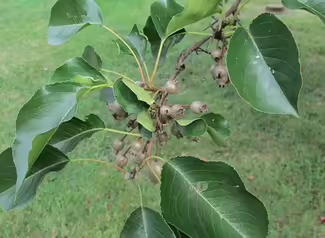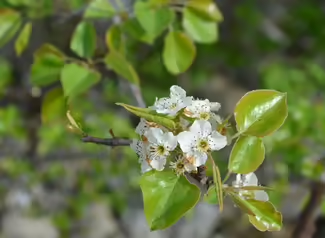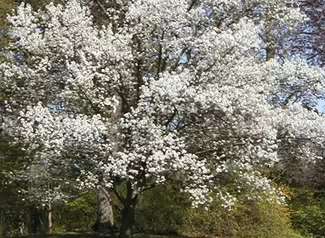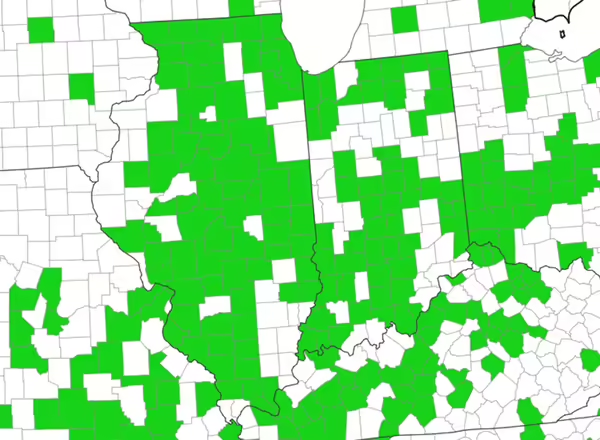
Invasive Callery Pear
The Callery pear tree (Pyrus calleryana) covers the Illinois landscape in white blooms for a few weeks in April. This tree was widely planted in the 1950s as a popular ornamental tree in the home landscape. Later, cultivars could cross-pollinate to produce seeds that birds brought to natural areas where the trees are now spreading.
History of Callery Pear
Callery pear trees were brought to North America from China in the early 1900s with the thought that they would be a more disease-resistant fruit bearing tree. The tree was used in experimentation with the common fruiting pear (Pyrus communis) which resulted in the Bradford Pear cultivar, a tree that could tolerate a variety of harsh growing conditions. A drawback of the Bradford pear species was that it grew fast and developed narrow crotch angles in its branches, which made it susceptible to splitting in heavy winds and storms. New cultivars were developed, but they could cross-pollinate with other fruit bearing trees and produce fruit which are readily moved by birds. Soon after, Callery pears became invasive and can now be seen taking over native habitats and abandoned fields.

The growth form of Bradford pear (Pyrus calleryana), which develops narrow crotch angles, makes it susceptible to damage during high winds and storms. It can be a hazard in urban settings. The ability to cross-pollinate with other fruit bearing trees provides the tree the ability to reproduce via seed. Birds are attracted to the fruit and transport the seeds to natural areas where these trees can outcompete native vegetation.
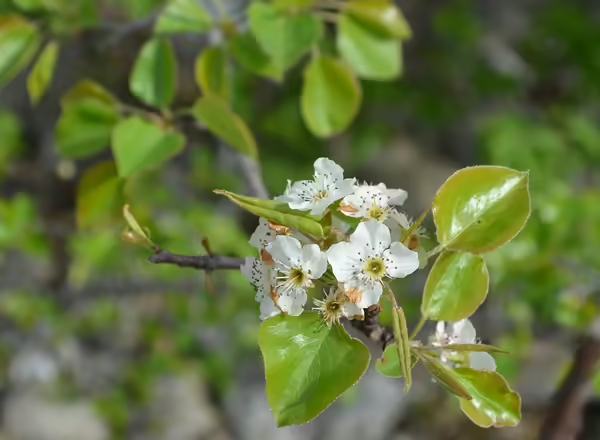
Callery pear trees were brought to North America from China in the early 1900s with the thought that they would be a more disease-resistant fruit bearing tree. The tree was used in experimentation with the common fruiting pear (Pyrus communis) which resulted in the Bradford Pear variety, a tree that could tolerate a variety of harsh growing conditions. A drawback of the Bradford Pear species was that it grew fast and developed narrow crotch angles in its branches which were susceptible to splitting in heavy winds and storms. New cultivars were developed, but they could cross-pollinate with other fruit bearing trees and produce fruit which are readily moved by birds. Soon after, Callery Pears became invasive and can now be seen taking over native habitats and abandoned fields.
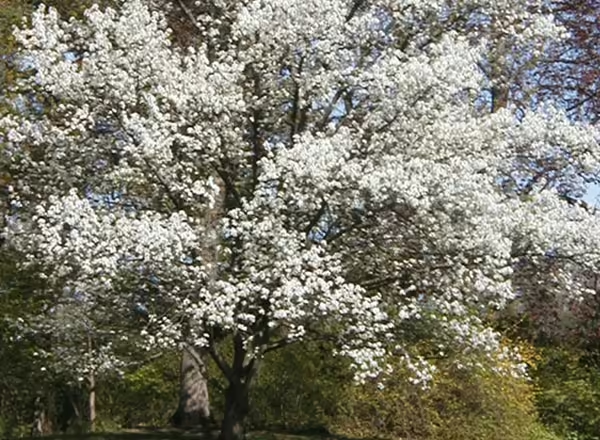
Bradford Pear is not listed as an invasive species in Illinois. Some cities in Illinois have banned the tree from city plantings. It is on the Department of Natural Resources invasive species list in Ohio. South Carolina and Pennsylvania banned its sale as of 2024.
How to Identify Callery Pear
Bradford pear is a small tree, typically no more than 40-feet tall. It has alternate leaf arrangement. Leaves are up to 3 inches long, round to ovate, and have a thick waxy cuticle. Leaves have a finely toothed edge or margin. The white, 5-petaled flowers measure ¾ inch across and grow in clusters. They have a strong, unpleasant odor. Fruits are ½ inch in diameter, green to brown, and covered in small pale white spots. The bark is gray to brown, changing from smooth to deeply fissured or scaley bark as it matures. Naturalized individuals will typically have spines.
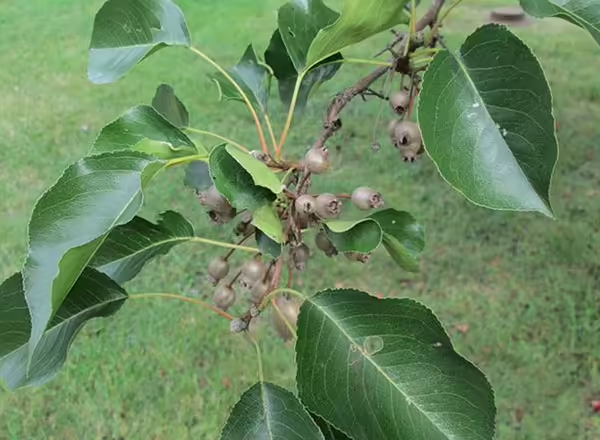
When looking for a flowering plant for the home landscape, consider these alternatives to Callery Pear:
- Redbud (Cercis canadensis)
- Serviceberry (Amelanchier canadensis)
- American Plum (Prunus americana)
- Flowering Dogwood (Cornus florida)
- Mechanical: Not recommended.
- Cultural: Not recommended.
- Chemical: Always read and follow the herbicide label before initiating treatment.
- Foliar: Apply 2% to 4% v/v glyphosate in water or 1% to 2% v/v triclopyr in water.
- Basal bark: For plants 4 inches in diameter or less, apply a triclopyr ester formulation at a 20% v/v rate, mixed with basal oil, to the lowest 15 inches of the stem.
- Cut stump: Apply glyphosate at a 25% to 50% v/v rate in water or triclopyr amine in water or ester in oil at a 20% to 25% v/v rate within 10 minutes of cutting.
From the Management of Invasive Plants and Pests of Illinois guide.
Are they invasive? Not legally in the state of Illinois. (Yet!) But we are seeing Callery pear and burning bush escape from our yards into natural areas across the state. Today Ken and Chris talk about these two plants, give some background, and then what we can plant instead of these baddies!...
Now considered an invasive species, the Callery pear is a widely used ornamental flowering tree with negative effects on native ecosystems. Until policies are amended and put in place to regulate the Callery pear, also called Bradford pear, this tree continues to be commonly produced and planted...
